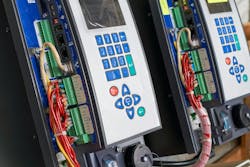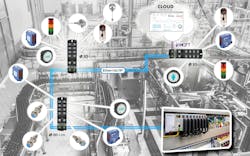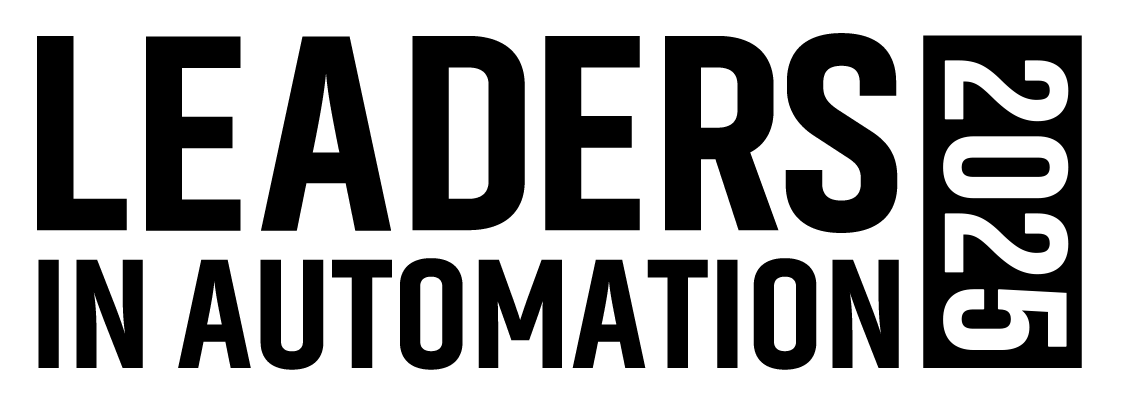How Modern I/O is Driving More Agile Automation Possibilities
Why this article is worth your time:
- Discover how advances in communication standards, distributed architectures and wireless technologies have transformed I/O systems from simple signal handlers to critical components of connected, agile manufacturing.
- Learn how built-in intelligence, edge computing and AI/ML integration enable I/O modules to handle real-time data processing, predictive maintenance and diagnostics with unprecedented efficiency.
- Gain insights into how innovations like IO-Link, 5G and decentralized I/O systems simplify wiring, connect legacy and new devices, and make industrial systems more scalable and adaptable for evolving manufacturing needs.
When the evolution of industrial automation and the digital transformation of manufacturing come up, I/O (input-output) technology may not come to mind.
“I/O seems like a pretty cut and dried subject,” said Jeff Payne, director of business development at AutomationDirect. After all, “what can you do to cause evolution in a relay output that’s switching 120V AC, or a sensor that’s sinking or sourcing 24V DC. In each case, the signal is still just a 1 or 0, on/off, true/false.”
Even analog signals have remained as they have been for decades in the 4-20mA current range and in the 0-5V DC, 0-10V DC, ±5-V DC ±10V DC range.
“Sure, analog signals have seen an increase in precision and resolution, from older 8-bit resolution to 16-bit and even 24-bit resolution modules for ultraprecise applications,” said Payne. “But there has been no significant change in analog signals.”
Rather than seeing any major developments in the I/O itself, Payne sees the evolution of I/O technology occurring in the communication of the signals, especially in the communication standards for passing those signals along.
Other automation experts also see the evolution of I/O technology in the building of distributed data networks and in the built-in intelligence for handling the avalanche of data flowing through these networks. From this perspective, I/O technology is no longer just a backend detail.
“It’s a key piece of the puzzle in building agile automation,” said Azad Jafari, I/O product manager at Beckhoff USA. “I/O technology has come a long way, evolving to keep up with the demands of today’s smarter, more connected factories. Modern I/O — whether installed in control cabinets [IP20] or directly on machines [IP67] — plays a crucial role in automation and is no longer just about collecting signals.”
Distributed I/O networks
The major driver of this evolution has been the need for I/O on demand.
“The cost of connecting I/O had been slowing people down from getting the data that they needed,” explained Aaron Crews, global director of modernization solutions at Emerson’s process systems and solutions business. “Users need I/O to be flexible enough to get the appropriate data into the system.”
With an I/O-Link connection, the primary device signal of on/off or 0-100% is still read or commanded. But IO-Link’s digital communications open up a completely new set of data that can be received from a device, such as status, health, quality and errors.
For this reason, automation vendors have developed I/O offerings based on a distributed, decentralized model.
“With decentralized architectures, I/O can now be placed exactly where it’s needed, making machines more modular, flexible and easier to wire,” said Jafari. As an example, Beckhoff’s IP67-rated EtherCAT Box I/O modules can be mounted on machinery, even in harsh environments, without the need for enclosures.
Distributed I/O often relies on wireless communications. “Wireless is opening new doors, especially in areas where cables are hard to install, such as on autonomous mobile robots or especially in remote locations,” said Jafari.
Not only have wireless communications expanded the realm of use cases, but they have also slashed or even eliminated the wiring typically required in a conventional I/O architecture. “As we have moved away from bus-based I/O to a more distributed model, the cost of implementation has come down dramatically,” said Crews. “Changes throughout a project are now easier to implement and design has become more flexible, eliminating many of the overhead costs.”
This means that the benefits of this cheaper and more flexible generation of I/O devices can extend beyond the initial implementation. These new I/O devices open doors for users to expand, relocate or update their installations later, as demand for their products, the technology for producing them, and other circumstances evolve, according to Kelsie McMillin, senior technology marketing specialist for IoT at DigiKey.
She also points to 5G communications as a promising wireless technology for establishing I/O connectivity. “The capabilities of this technology are still in their nascent stages,” said McMillin. “As more features are unlocked and infrastructure expands, we can expect substantial improvements in efficiency, latency and bandwidth to enhance further the performance of wireless I/O systems.”
I/O endowed with intelligence
The decreasing cost of installing I/O has contributed to a corresponding increase in data collection. “Organizations can now better leverage their resources to gain insights from anywhere — not just once a year or once a month, but every second if needed,” said Crews.
To collect this influx of data and turn it into useful information, automation vendors are adding intelligence to the I/O modules.
Another way to connect disparate devices in I/O systems, especially in the process industries, involves the use of I/O-agnostic control interfaces that some automation vendors offer as gateways between new controllers and legacy I/O.
“Initially, industrial I/O modules were bulky and primarily focused on basic digital and analog signal processing,” noted Charlie Norz, director of automation product management at Wago. “However, advances in technology have led to the development of more compact and versatile I/O devices.”
This versality includes specialized modules, such as three-phase measurement modules for controlling complex electrical systems and proportional valve modules for controlling hydraulic control valves. These more-capable I/O modules put intelligence closer to sensors and actuators to provide the detailed, real-time information necessary for industrial Internet of Things (IIoT) applications.
“This proximity allows for faster data processing and more accurate control, which reduces latency and improves response times,” said Norz. This lets intelligent modules perform complex tasks such as diagnostics, process monitoring and predictive maintenance.
A challenge associated with these modern I/O modules involves dealing with the overwhelming amount of data generated by sensors and actuators.
“This influx of data can strain traditional PLCs [programmable logic controllers] and can lead to inefficiencies and bottlenecks in data processing,” explained Norz.
One way to solve this problem is to relieve the PLCs of these processing tasks by using edge devices for data analytics. Smart sensors can help here.
“These sensors offer richer data streams, perform self-diagnostics and can transmit vital information directly to maintenance personnel regardless of their location, eliminating the need for manual inspections [to discover issues],” said McMillin.
“Edge devices can also perform data contextualization and aggregation, which helps in filtering and organizing data before it is sent to the cloud,” added Norz. “This approach not only optimizes cloud storage and processing but also enhances real-time decision-making by reducing latency.”
Besides edge computing, other forms of intelligence shaping the future of I/O technology are artificial intelligence (AI) and machine learning (ML).
“This an exciting development that we’re keeping an eye on [for I/O],” said McMillin. “Although AI/ML is already providing unprecedented levels of data analysis compared to just two decades ago, its potential for the future is immense.”
For example, she anticipates the ability to predict sensor failures at their origins, which often begin before a human can notice that an anomaly has occurred. “This predictive capability extends beyond sensor maintenance,” she noted. “With the proliferation of new sensor types such as cameras and other data acquisition tools, AI/ML will enable far more efficient and insightful data processing across various industrial applications.”
Connecting disparate devices
Besides intelligence, another important component of a distributed I/O strategy is in how it enables the use of legacy and new devices. Related to this, Payne points to IO-Link, the IEC 61131-9 standard for passing data bi-directionally between field devices, like sensors and actuators, and a host, such as a PLC or IO-Link gateway.
“I/O-Link offers a better way to link plant-floor operational technology (OT) to enterprise information technology (IT),” he said. “With an I/O-Link connection, the primary device signal of on/off or 0-100% is still read or commanded. But digital communications open up a completely new set of data that can be received from a device, such as status, health, quality and errors.”
This versality of new I/O tech includes specialized modules, such as three-phase measurement modules for controlling complex electrical systems and proportional valve modules for controlling hydraulic control valves. These I/O modules put intelligence closer to sensors and actuators to provide the detailed, real-time information necessary for IIoT applications.
The collection of this kind of data is often crucial for predictive maintenance, a capability gaining popularity among users.
Besides supporting a richer collection of data, IO-Link also simplifies wiring. “A typical IO-Link field device is connected via a standard cable, usually about one to two meters in length, to an IO-Link master or hub,” explained Payne. “The IO-Link master is connected via Ethernet to a controller, likely a PLC, or straight to an IT network via an IIoT protocol like MQTT (message queuing telemetry transport).”
This arrangement can replace the use of significant amounts of signal cables with one Ethernet cable.
Another way to connect disparate devices in I/O systems, especially in the process industries, involves the use of I/O-agnostic control interfaces that some automation vendors offer as gateways between new controllers and legacy I/O.
“These interfaces allow teams to reap the advantages of new control technologies yet offer the flexibility to maintain their legacy I/O indefinitely,” said Crews. “Teams can also match the pace of their modernization to the size and capabilities of their plant staff.”
Such was the case at a processing facility that wanted to migrate to a new DCS to accommodate various types of I/O in its processes, move data to where it was needed and perform state-based control not supported by the legacy system. “A full rip-and-replace was not a realistic option [for this processor],” said Crews, “due to the cost of replacing all the I/O, the personnel available to complete the task and the massive outage that would have been caused by shutting down the system for that long.”
By using an I/O-agnostic interface, the project team was able to leave much of the legacy I/O place and expand it only where necessary using Emerson’s CharMs (Characterization Modules) I/O. Being able to take advantage of the data that was already wired kept installation costs down and let the team focus its spending strategically on software that would drive operational performance.
“They were even able to bring new safety data in through Ethernet,” said Crews.



